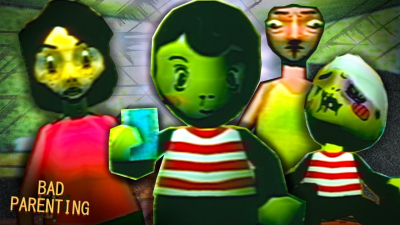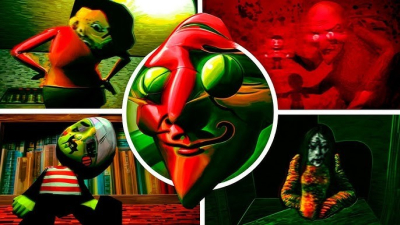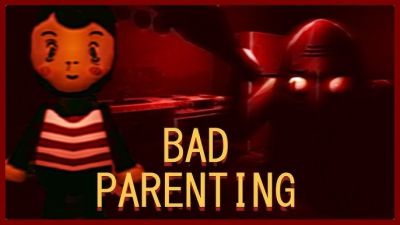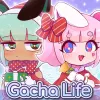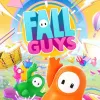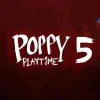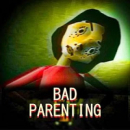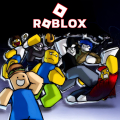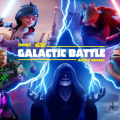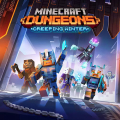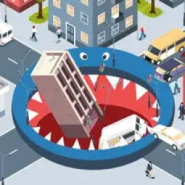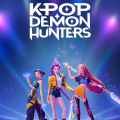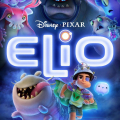Bad Parenting review
Bad Parenting
From the moment I booted up Bad Parenting 1: Mr. Red Face, I was drawn into a universe that defies traditional expectations. I quickly learned that this game is more than a mere simulation—it is a quirky, challenging exploration of relationships and responsibilities wrapped in a visually arresting package. I found myself oscillating between genuine amusement and puzzled contemplation as each quirky scenario unfolded before my eyes. As I navigated this unconventional landscape, I discovered layers of meaning scattered among the playful chaos, inviting me to reconsider how I view authority, care, and the consequences of my actions in an interactive narrative.
Being someone who craves narrative depth combined with eccentric humor, I appreciated how the game did not shy away from making me feel both mischievous and reflective. The early stages had me questioning the nature of parenting in the game's unique universe while simultaneously engaging in acts that were both humorous and oddly thought-provoking. The immersion was immediate, and every decision I made contributed to an experience that was deeply personal yet universally relatable in its commentary on flawed human behavior.
Exploring the Mechanics of Chaos
The gameplay mechanics in Bad Parenting 1: Mr. Red Face offer a refreshing take on management and decision-making. I found that the controls were intuitive enough for a casual dive into its world yet layered with enough complexity to satisfy a more methodical approach to challenges. Every interaction, from managing resources to making spontaneous decisions on how to handle in-game scenarios, was designed to keep me on my toes. The responsiveness of the actions and the feedback I received were cleverly intertwined with the game’s narrative—each misstep or success reverberated with humorous consequences.
The challenge lay in balancing my impulse to indulge in chaotic antics with the occasional hidden moral consequence that the game presented. I felt a satisfying tension every time I was faced with a critical decision, aware that each miscalculation could lead to unexpected narrative twists. This effective melding of simple controls with complex choices left me engrossed, constantly analyzing my next move while laughing at the absurdity of the unfolding scenes.
Crafting a Whimsical Story
What sets Mr. Red Face apart is its narrative. I found the story to be a refreshingly offbeat narrative that breaks free from conventional storytelling. The game is structured around a series of unexpected events, each crafted with both a sense of irony and a deeper commentary on societal expectations. As I progressed, I noticed how the narrative cleverly parodied the notion of traditional roles. Every anecdote and character interaction felt deliberately over the top, yet there was an authenticity in the way these overblown caricatures confronted everyday issues.
Narrative twists came unannounced, and I learned to expect nothing but the absurd. I vividly recall moments where the storyline would take an unexpected turn, forcing me to reconsider my earlier decisions in the context of new revelations. The temporality of choices—a recurring theme that kept me revisiting previous actions mentally—fueled a sense of ongoing discovery that kept the narrative vibrant and engaging. Underneath the humor lay a subtle critique of established norms, encouraging me to think about responsibility in a non-traditional frame of mind.
Visual Flourishes and Artistic Execution
The aesthetic charm of Mr. Red Face is unmistakable. From the moment I encountered its bold character designs, I was taken by the unique visual style that marries cartoonish exaggeration with detailed artwork. The color palette is daring, utilizing vivid hues that amplify the game’s humorous undertones while simultaneously casting a light on the darker aspects of its narrative. I admired the diversity in character expressions and backgrounds, each element crafted with a mix of satire and care that perfectly matched the game’s thematic ambiguities.
Every visual element felt meticulously chosen to enhance both the narrative and gameplay. The use of exaggerated facial expressions, in particular, caught my eye; they communicated emotions and unsaid commentary without a single word. I noticed that the design choices were consistent throughout, lending the game a distinct identity that was both playful and reflective. The visuals served as a constant reminder that beneath every seemingly trivial moment lay layers of thoughtful design, encouraging me to look twice at every detail.
Sonic Adventures in a Bizarre World
Sound played an incredible role in amplifying my experience with Mr. Red Face. I was pleasantly surprised by the thoughtful integration of music and sound effects that not only complemented the visual quirks but also deepened the emotional impact of the key moments. The musical score, whimsical yet poignant, shifted seamlessly with the ebb and flow of the narrative, sometimes whispering irony and at other times screaming absurdity. Every tap and interaction was underscored by carefully chosen sound bites that tickled my auditory senses.
The ambient sounds of the game built a layered atmosphere that made each scenario feel living and dynamic. I could almost feel the tension mounting during particularly challenging sequences, guided by the rising tempo of the background score. This auditory immersion made it easy for me to surrender to the peculiar rhythms of the game—a harmony that resonated with its visual narrative and compelling interactions.
Intricate Characters and Their Quirks
One of the most compelling facets of Bad Parenting 1: Mr. Red Face is its cast of memorable characters, each brought to life with vibrant personality traits and idiosyncrasies. I appreciated how the game managed to portray characters who were crafted from the fabric of distorted reality—a realm where humor meets honest imperfection. Every eccentric dialogue or unexpected moment of emotional vulnerability drew me further into the character's lives, making me feel like an active participant in their unconventional journey.
Even Mr. Red Face himself, despite the exaggeration of his traits, struck a surprising chord with me. His interactions were marked by an unpredictable mix of sincerity and satirical energy that forced me to peel back layers of his persona. In many ways, the characters became archetypes of exaggerated reality, yet their behaviors echoed authentic human emotions that I could both mock and admire. The careful balance of caricature and genuine sentiment made each encounter a rich, nuanced experience that I returned to with delight.
Dynamic Interactions and Unorthodox Parenting
Engaging directly with the game environment and characters felt like participating in a live workshop on unconventional parenting. I was drawn into scenarios where each decision influenced not only my immediate gameplay but also the underlying narrative's trajectory. The interactivity was nuanced, requiring me to not only follow a linear path but to experiment with choices that tempted both chaos and order in equal measure. I found myself laughing at absurd interactions while simultaneously grappling with the consequences of my in-game behavior.
This dynamic interplay extended to every facet of the game—from managing household dynamics to handling unexpected events with a mix of humor and trepidation. I was constantly active, both as a strategist and as an observer of the unintended results stemming from each decision. The game’s feedback loop was refreshingly direct, ensuring that I felt every ripple of change in the environment as I adapted my approach. The sense of agency was palpable, and it invited me to dive deeper into the experiment of unconventional responsibility.
Puzzling Challenges and Tactical Depth
The challenges posed in Bad Parenting 1: Mr. Red Face are as layered as they are enthralling. I encountered puzzles that demanded a fusion of lateral thinking, timing, and resource management. The game rewarded my experimental approach because, even when my choices led to unexpected complications, there was always a learning curve cleverly embedded within the mishaps. Each puzzle felt like a mini-experiment in itself—an opportunity to tap into creative problem-solving under the guise of playful chaos.
At several junctures, I realized that victory was not measured by a single achievement but by the journey of trial and error. The hurdles were designed to provoke frustration and amusement concurrently, and I found that the satisfaction of overcoming an obstacle came with a hearty dose of humorous relief. It was exactly this balance between intellectual challenge and playful narrative that kept me engaged for hours on end. I relished the moments where the game forced me to rethink strategies, and every solution felt earned rather than mechanistically pre-determined.
Humorous Undertones in Every Pixel
The humor interwoven throughout the gameplay and narrative is what truly sets the experience apart. I often found myself caught off guard by the clever, biting wit that pervaded even the most mundane interactions. Every visual gag and humorous dialogue line was delivered with impeccable timing, ensuring that laughter was a constant companion in my journey through this exaggerated world. The game’s approach was refreshingly self-aware, inviting me to laugh at the absurdity of my virtual parenting misadventures, yet always hinting at the underlying complexity of the decisions made.
In one particularly memorable instance, I was navigating a high-tension scenario where my choices seemed to teeter on a fine line between reckless abandon and thoughtful care. The humorous undertones in the dialogue and visual cues turned a moment of potential anxiety into an unexpectedly delightful episode. This humor was not merely an afterthought—it was a central component of the experience that made me question societal norms and laugh at my own tendencies to overthink and oversimplify human interactions. The playful narrative structure made each event feel like a scene from a satirical play, where irony met sincerity in every carefully crafted line.
Emotional Resonance and Personal Parallels
Diving deep into Bad Parenting 1: Mr. Red Face, I unexpectedly found elements that resonated on a personal level. Several moments in the game, despite their ostensible absurdity, struck chords that echoed the challenges of real-life decision-making. What began as a humorous escapade gradually turned introspective, prompting me to reflect on the nuances of authority and the weight of responsibility in everyday behavior. The emotional journey was as unpredictable as the gameplay itself, filled with bursts of mirth intertwined with self-aware moments that felt oddly familiar.
I experienced heightened sensation when the game's narrative paused to allow for a comparative exploration of chaos and order. It was as if the game was hinting that every action in our lives, no matter how trivial it may seem, constructs the framework of our larger story. This subtle layering of humor and emotional depth made the virtual world feel less like a detached simulation and more like an expressive, living space where my choices had both fleeting and enduring impacts. It compelled me to view the game not just as a recreational escape, but as a reflective mirror of life's unpredictable twists.
Interface and Interaction: A Fresh Perspective
The game’s interface, though deceptively simple at first glance, unfolded into an intricate web of options that empowered my every move. I was impressed by how the developers managed to marry a streamlined design with rich customization options. Every menu click or screen transition was smooth, and I could easily navigate between different layers of control without getting lost in an overly complicated system. This delicate balance between accessibility and depth was a testament to thoughtful design, providing me with the freedom to experiment without the burden of clunky controls.
Throughout my hours of gameplay, I grew accustomed to the interface that seemed to intuitively understand my intentions. Whether I was switching between perspectives or diving into a sub-menu for additional options, I never felt overwhelmed by the sheer number of available choices. Instead, I appreciated the intelligent layout that kept important actions within reach while leaving room for surprises along the way. This ease of use allowed me to immerse myself fully in the game’s narrative, ensuring that every decision was met with an immediate and gratifying response from the system.
Reflections on a Playful Experiment in Parental Roles
There is an undeniable sense of experimentation in the portrayal of parental dynamics within Mr. Red Face. The game dared to question conventional wisdom by creating scenarios that forced me to reimagine the often rigid expectations placed on authority figures. As I maneuvered through the unpredictable situations, I found a blend of satire and sincerity that painted a picture of parenting as an evolving, imperfect art form. I was reminded that each mistake was not just a setback but an opportunity for growth, presented in the form of humorous setbacks and surprising victories.
This interactive representation of parenthood resonated with me on multiple levels. I felt both amused and challenged as the game presented its own form of creative expression, one where the traditional roles were deconstructed and reassembled into something entirely new. The freedom to explore these dynamics without the usual constraints of realism offered me a playful escape, while also inviting me to contemplate the broader implications of authority in a modern context. Every misadventure on screen felt like a nod to the imperfect nature of every role we assume in life, leaving me both entertained and contemplative throughout the experience.
A Journey Through Layers of Unexpected Complexity
Every time I revisited a previous scenario in Bad Parenting 1: Mr. Red Face, I discovered new layers of complexity that had initially slipped by unnoticed. It was evident that the game was crafted with a multi-dimensional approach; each layer of gameplay revealed nuances concerning character behavior, environmental cues, and even subtle narrative hints that enriched my understanding of the entire experience. I felt as if I were unwrapping a story that was written in multiple languages, where every new observation added depth to the seemingly light-hearted gameplay.
The interplay between hidden details and overt humor made the game feel like an evolving puzzle. I began to treat every interaction and minute detail as an invitation to explore further, knowing that behind every seemingly random act there might be a carefully curated insight waiting to be discovered. This relentless attention to detail captivated my curiosity, ensuring that I remained engaged even during moments that could have easily been dismissed as mere filler. The persistent layers kept the game intriguing and encouraged me to approach it not just as a pastime, but as an evolving narrative rich with unexpected revelations.
Imagining Continued Adventures
Throughout my time with Bad Parenting 1: Mr. Red Face, I found myself constantly imagining scenarios beyond the immediate gameplay. The game hinted at possibilities of extended narratives, alternative paths, and even unseen characters. There was a distinct sense of potential lurking in each inconspicuous moment, compelling me to speculate on the larger narrative framework that might be explored in future versions or expansions. I could picture additional chapters unfolding, each exploring variations of the themes that the game laid out so boldly.
As I engaged with the content, the idea of future adventures felt not only plausible but necessary. Every interaction I experienced served as a teaser for what might come next—a deeper dive into the unconventional roles and unexpected moral dilemmas. I felt a distinct anticipation, similar to the feeling when one finishes a book with an open-ended final chapter. The prospect of revisiting this world with fresh eyes and different choices seemed too enticing to ignore, and I left the experience with a sense of wonder about how far the creative vision could stretch.
Pros
- Unique narrative style blending humor and introspection
- Engaging gameplay mechanics that balance simplicity with strategic depth
- Remarkable visual artistry with bold, memorable character designs
- Immersive sonic score that dynamically enhances the experience
- Intricate character development offering both satire and genuine sentiment
- Dynamic decision-making that creates a personalized, evolving narrative
Cons
- Steep learning curve for players new to unconventional genres
- Occasionally ambiguous instructions that may lead to unintended choices
- Some puzzles can feel imbalanced, potentially disrupting the overall flow
To download the app, you will get links to the Official Website and/or official digital markets.
